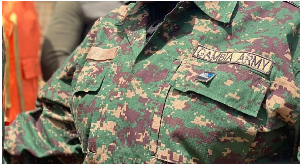The long anticipated decision by the Bank of Ghana’s Monetary Policy Committee to cut the benchmark Monetary Policy Rate has not given corporate Ghana the enthusiasm and relief it was supposed to because even as the country’s banks and other commercial lenders re-calibrate their lending rates in response to this week’s 150 basis points cut in the MPR they are already tightening their credit stance in response to the uncertainties brought about by the arrival of the coronavirus pandemic in Ghana.
Although, the reduction in the MPR is bigger than earlier anticipated – few businesses had expected a cut of more than 100 basis points – bankers are already warning that loans will be much harder to secure than hitherto as the coronavirus has greatly increased the risk of loan default. This means lenders will demand wider interest margins to compensate them for the greater credit risk, which would negate the expected significant reductions in base lending rates, that will result from the MPR cut.
But more worrying for business owners and managers is the fact that most lenders intend to simply cut back on new lending, even at significantly wider effective interest margins, because, as one banker succinctly put the situation yesterday, “with the arrival of coronavirus, credit risk can no longer be properly quantified and priced.”
The BoG, anticipation of this has announced a two percent reduction in primary reserve requirements, from 10 percent to 8 percent and a 1.5 percent reduction in the capital adequacy buffer, from 3.0 percent to 1.5 percent (thus reducing the minimum effective capital adequacy ratio from 13 percent to 11.5 percent.) Both measures effectively free up more money held by banks for lending.
But bank chieftains who spoke to Goldstreet Business yesterday said that new lending will be restricted mainly to working capital loans for regular customers with well-established track records of strong cash flows, and who are not engaged in activities which will inevitably be hard hit by fears of becoming infected. Thus, for instance, enterprises that provide essential goods and services such as food and petroleum products will still be given working capital loans, but enterprises in the hospitality and travel industries for example will find it difficult to secure financing for now, because their revenues are sure to decline significantly while the virus is making the rounds. Most longer-term loan application assessments are being put on hold until the situation going forward becomes clearer.
This is bad news for heavily credit-dependent corporate Ghana, which had been on the brink of a recovery in new lending volumes following a slump as a result of the recently resolved financial services industry crisis, which had forced commercial lenders into hefty bad loan write offs and major recapitalization; even as mass liquidations of financial intermediation companies and accompanying lock up of customer deposits had deflated confidence in the industry as a whole, ultimately slowing both deposits and credit growth to their lowest levels in more than two decades.
In nominal terms credit to the private sector grew by 23.1 percent, year on year, in January 2020, after the growth rate bottomed out (for the 2019 financial year) at 12.6 percent during the third quarter of last year. But in real (2018 constant prices) terms, year on year growth in credit to the private sector was 14.1 percent in January this year, roughly the same as the 14.2 percent in February 2019, but well above the 4.6 percent at which it bottomed out (for 2019) during the third quarter of the year.
For enterprises that will still get bank credit, they can expect it to be only marginally cheaper than hitherto despite the 150 basis point cut in the MPR as banks seek wider interest margins to compensate for higher perceived credit risk. Prior to this week’s MPR cut, the interbank weighted average interest rate was 15.86 percent, up from 15.20 percent at the end of 2019. Conversely though, the average lending rate was 23.37 percent, down from 23.59 percent at the end of 2019, while the Ghana Reference Rate, which guides banks in setting their respective base lending rates was 16.18 percent, up from 16.11 percent at the end of 2019.
While banks are expected to announce cuts in their respective base rates that more or less mirror the 150 basis points cut in the MPR, and interbank rates will fall in similar fashion, average lending rates are likely to fall more slowly, by less than 100 basis points, until the coronavirus outbreak recedes in Ghana.
Business News of Sunday, 22 March 2020
Source: goldstreetbusiness.com













